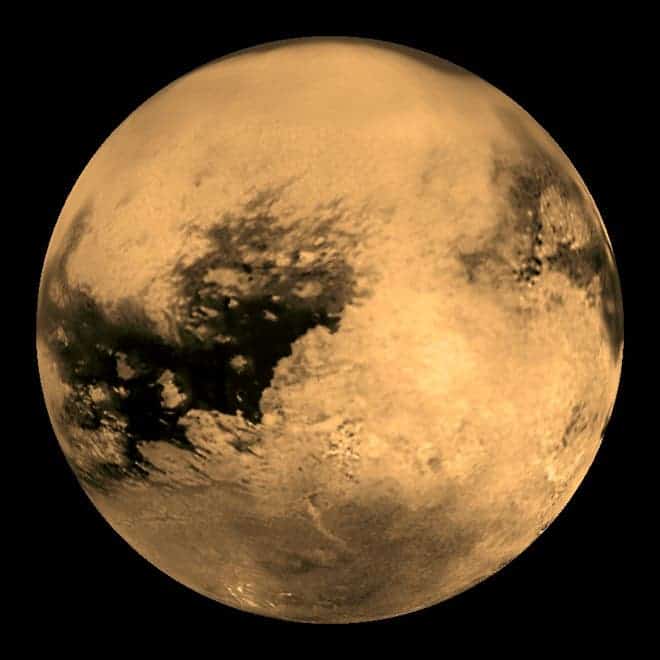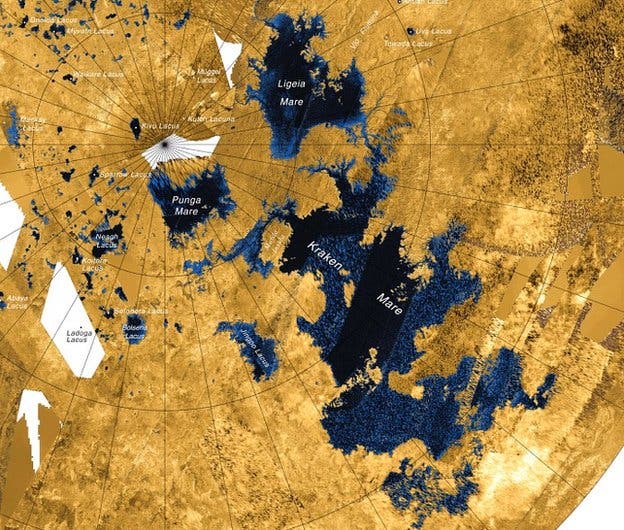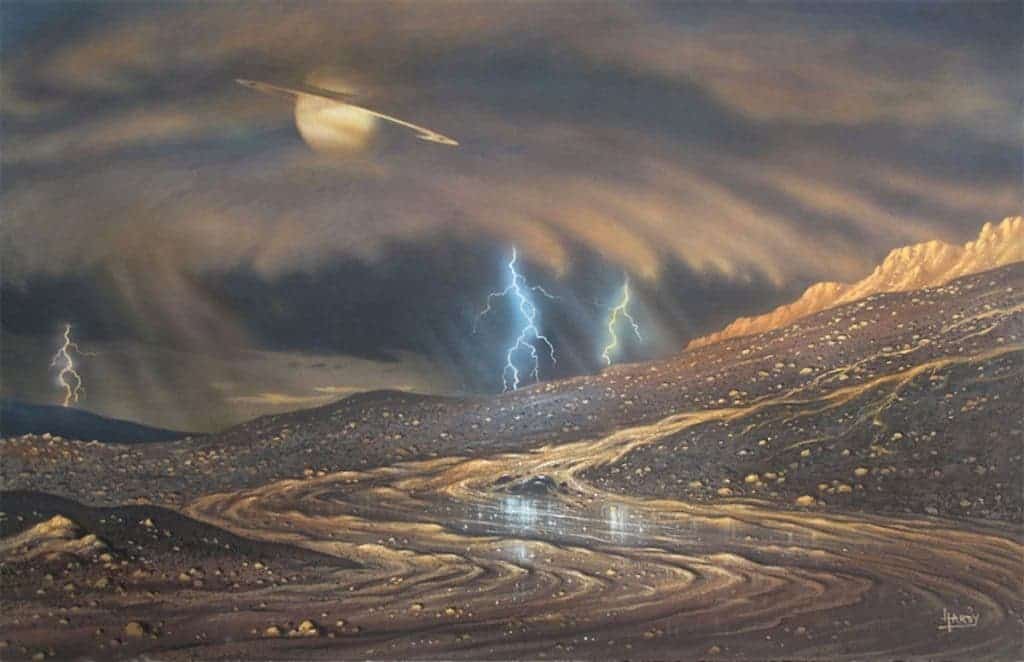We are detecting waves on a world 1,272,000,000 km away from Earth.
An interesting world
The signature of isolated ripples was observed in a sea called Punga Mare on the surface of Saturn’s moon Titan; but before you get overly excited, you should know that these seas are not filled with water, but with hydrocarbons like methane and ethane.
Titan is one strange place; it’s a satellite, but it’s bigger than Mercury. It’s also the only place in our solar system where evidence of liquid has been found on the surface, but wait, it gets even better – researchers believe that there is also an underground ocean, which might harbor life.
If you look at it a little, Titan has a lot in common with Earth. It has an atmosphere and seasonal cycles, river channels modeled by wind and rain, seas, dunes and even shorelines. But if you look at it even closer, you’ll also see just how different it is from our planet. The surface temperature on Titan is about -180degrees Celsius (-292 Fahrenheit). Its landforms are made of ice, rather than rock or sand, and liquid hydrocarbons take up many of the roles played by water on Earth. Just so you can get a sense of scale, one of these seas, Ligeia Mare, is estimated to contain about 9,000 cubic km of mostly liquid methane – about 40 times the proven reserves of oil and gas on Earth.
Titanic waves
An image of Titan’s north pole taken by the Cassini probe during a flyby in July 2012 shows sunlight being reflected from surface liquid in much the same way as a mirror re-directs light. The phenomenon is called specular reflection, and interestingly enough, has been described 2.000 years ago. Analyzing this reflection, scientists believe they can identify waves on the surface of Titan. Specifically, Dr Barnes, from the University of Idaho in Moscow, US, used a mathematical model to analyze the reflections, and showed that they are compatible with waves.
“We think we’ve found the first waves outside the Earth,” he told the meeting. What we’re seeing seems to be consistent with waves at just a few locations in Punga Mare [with a slope] of six degrees.”
This is not an absolute certainty, as he says that other causes such as a wet mudflat, could not be ruled out. But if they are indeed waves (as it seems more likely), the wind speed is estimated at about 0.75 m/s – a mere breeze. The waves are also estimated to be just 2cm high.
“Don’t make your surfing vacation reservations for Titan just yet,” Dr Barnes jokes.
However, as I said above, Titan also has seasonal changes – and pretty soon, it will undergo one. The winds are expected to intensify as this mysterious world will change season.
“The expectation is that any day now, the winds will start getting strong enough as we move into northern summer, and the waves will start picking up,” Ralph Lorenz, from the Johns Hopkins Applied Physics Laboratory (JHUAPL) in Maryland, told ZME Science. “You can also get a phenomenon known as wind set-up, where wind over a body of water will cause the liquid to pile up, potentially causing a storm surge.”
Weather on Titan
Computer models of Titan’s weather suggest that in the norther hemisphere, the dry season is drawing closer to an end, and it’s almost rainy season. What happens during the rainy season? Hydrocarbons are “pumped” from the south pole to the north by the climate cycle, and, well, it will start raining hydrocarbons.
“We have a long-term picture of liquid levels rising in the north and declining in the south. But that’s against the backdrop of seeing what we think are evaporite deposits around the northern seas and lakes,” Dr Lorenz explained.
Astrophysicists and geophysicists are starting to put together more and more pieces of the puzzle… but it’s a really complicated puzzle. But one thing’s for sure – the liquids play a key role.
“Everything is really starting to come together, and the seas and lakes are very much becoming the central topic in Titan science.”












